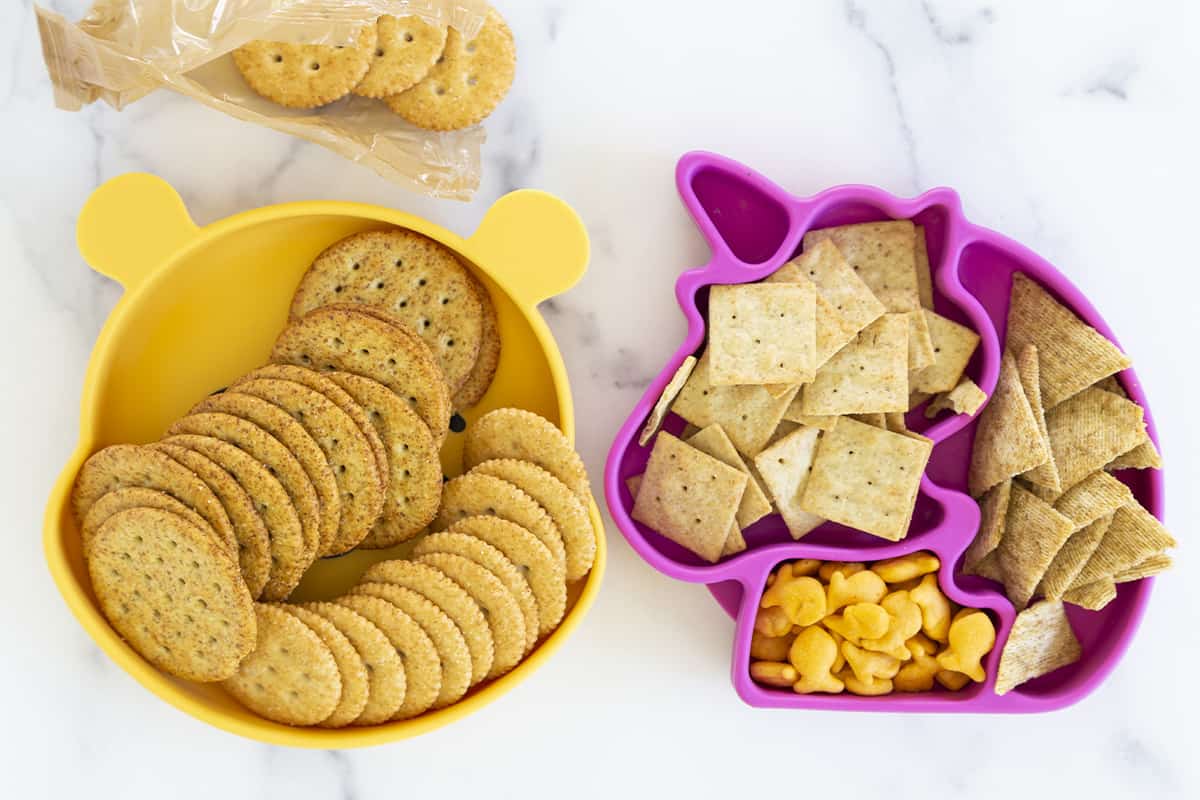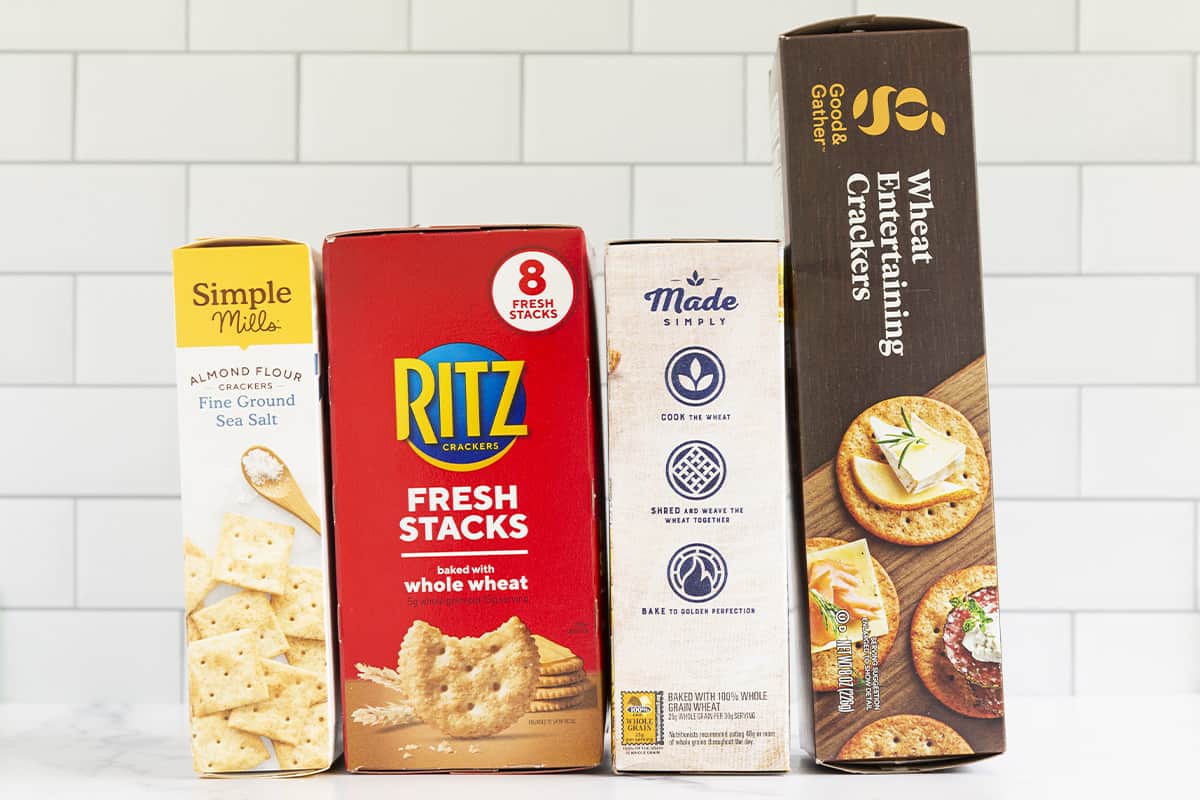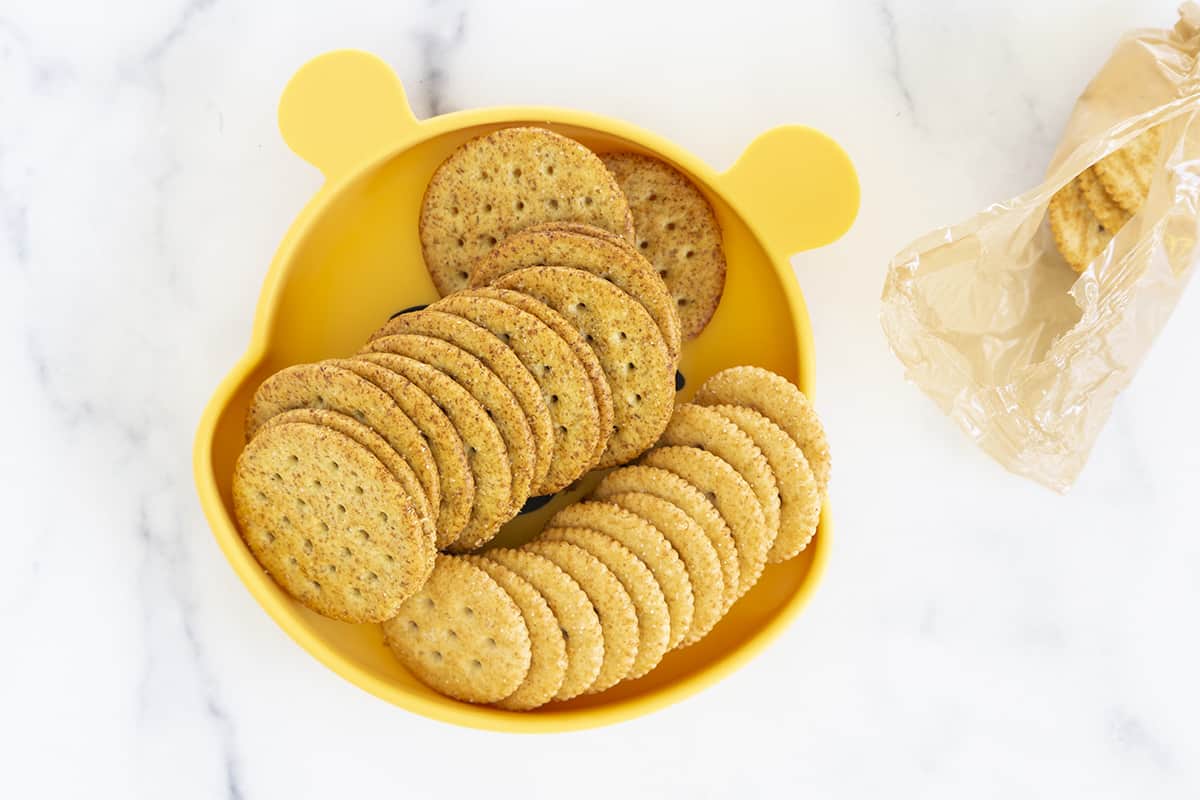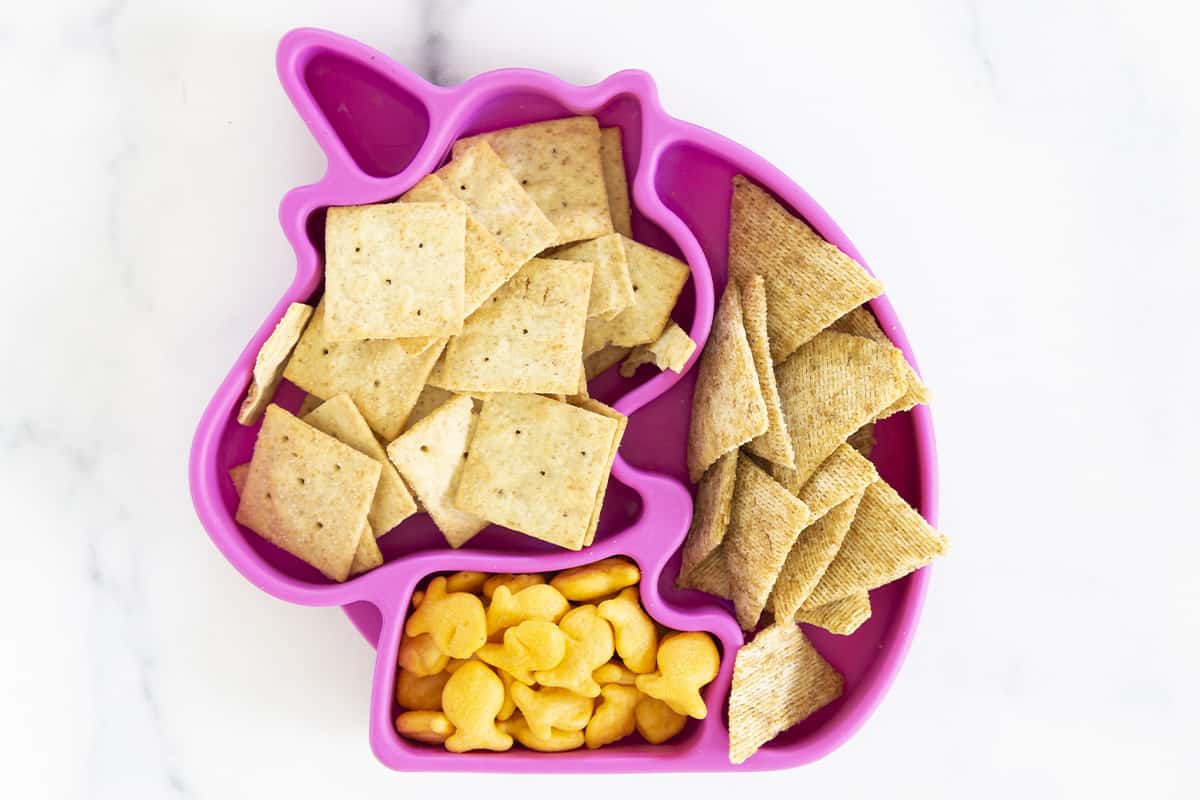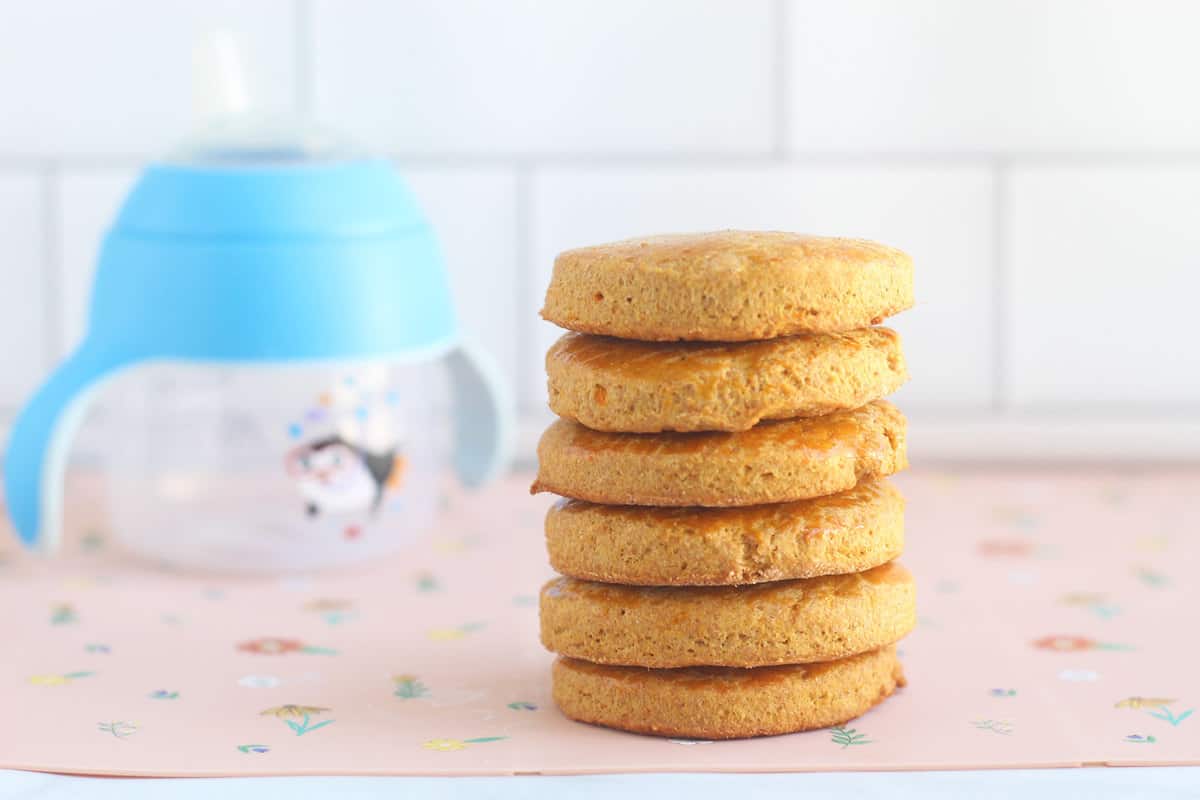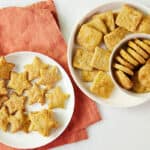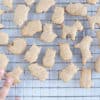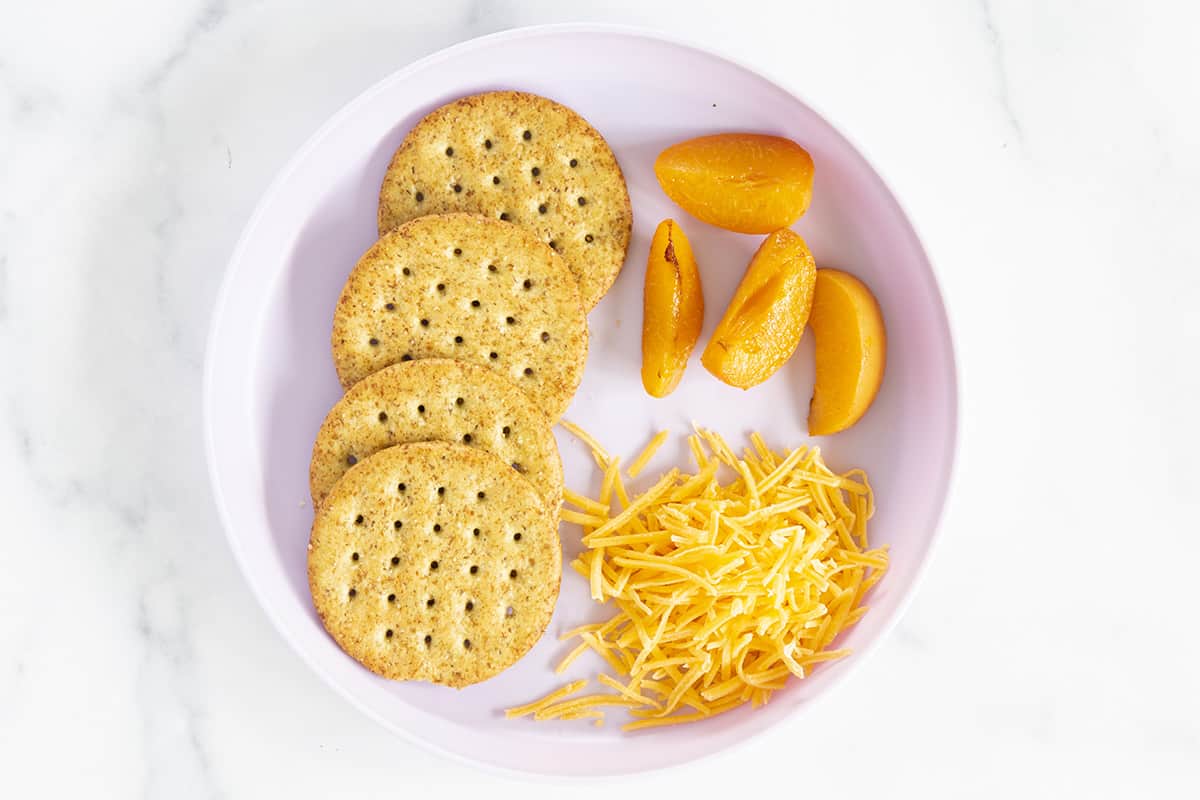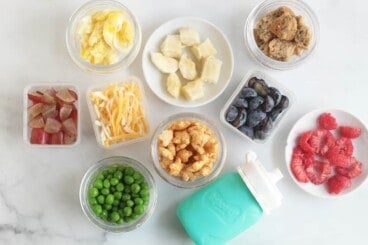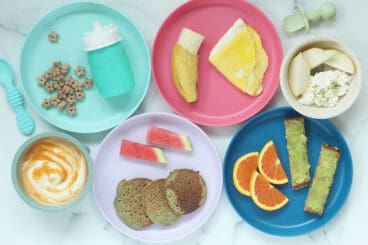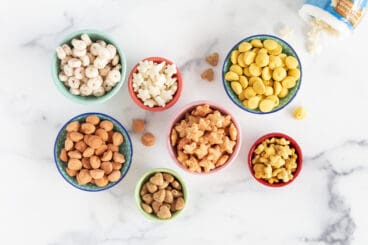Crackers for Baby
Crackers are one of those easy snacks that most parents rely on, but there are so many options and so factors to consider. I will help you sort through considerations when choosing crackers including texture, sodium, whole grains, and more. I do want to start by saying I think crackers can be one of those foods we can worry about, perhaps, too much. It’s one of the foods that gets polarizing really fast—one of the foods where we put so much pressure on ourselves to choose the “right” one. Our kids’ diets are so much more than any one food. Remember the big picture, remember to keep anything they’re eating in context of their overall life, and remember there’s no one right way to feed a baby or toddler.
Crackers for 1-Year-Old
I will also cover tips for choosing a cracker for a 1-year-old, which is similar to that of a baby but more options open up as they become more able to chew diverse textures.
Cracker Types to Look For
When starting out with choosing crackers for a baby, these are the considerations I make: Texture: You want baby crackers to be very soft and easy to gum, so this typically means a Ritz-type cracker, which dissolves relatively quickly. You want to avoid anything very hard, crunchy, or with large seeds or nuts, as those could all be choking hazards. Some whole grain crackers, such as Triscuits, are very likely too difficult for this age to chew so those are best kept for kids over age 2. Sodium: I don’t tend to worry about this much since I view it in the context of all of the other foods baby is eating, but you can look for a low-sodium cracker to reduce the amount. (Remember that many babies eat far less than the serving size, so the sodium in a cracker or two is much less than what’s in the serving size on the package.) Read more about sodium for this age. Whole grains: Yes, it is great to choose a cracker made from whole grains since that means there will be some fiber in the mix. Many whole grain crackers—well, the ones that have noticeable fiber—can be too hard for this age to chew. So I try to relax about this one and remember that we can introduce those heartier crackers as the kids get older and those textures are safer.
Favorite Crackers Brands for Baby
Here are some options you can look for at the store when choosing a baby cracker. (These are based on U.S. stores. If you live in another country, options may vary.)
Ritz: Whole wheat Ritz crackers are soft and easy for baby to gum. (There may be a less expensive store-brand equivalent.)Breton: This brand is widely available, and they make soft crackers in a range of grains and flavors. (There may be a less expensive store-brand equivalent.)Baby Rice Rusks: These are sometimes called “teethers,” “Mum-Mums,” or “rice crackers,” and they are specifically designed to be easy for babies to eat. They have very little substance, though, so don’t expect these to fill baby up or offer much nutrition. They can be a nice starting point. Look for brands including Gerber, Happy Family Organics, Peaceful Squirrel, and more.Happy Family Organics: This brands makes the rice rusks and also Teething Crackers, which are similar ingredient-wise.
TIP: Around 8 or 9 months old, you can also try puffs for babies, which come in a variety of flavors and ingredients.
Toddler Crackers
Once your baby becomes a toddler, you will start to have more options for safe textures of crackers. You can continue to do any options listed in the above section, but you can also look at these options. Triscuits Thin Crisps: For babies over about 18-20 months, these can start to be a nice option. They have simple ingredients and are easier to chew than classic Triscuits. (For regular Triscuits, I’d wait until over 2 as they are thick and harder.) Goldfish or other cheese crackers: Typically, 1-year-olds can easily eat cheese crackers as they tend to be soft and easy to chew (no matter how many teeth they may have). Nut Thins: These crackers, which are a nice option for gluten-free families, can be a nice option as kids get closer to age 2. TIP: You’ll want to wait on really hearty, seedy crackers until age 3 or 4, depending on the child. If a cracker has a texture that’s closer to a chip, that could be very hard to chew and a choking hazard.
Homemade Baby Crackers to Try
If you prefer to make baby crackers at home, these three recipes are easy and delicious. They’re all also a nice soft texture that is easy for babies and 1-year-olds to chew.
Best Tips for Success
Start with softer types of crackers that will dissolve easily, such as Ritz crackers or Breton crackers.Avoid very hard and crunchy crackers and any with large seeds or nuts.Look for a low-sodium option if you prefer.Offer as a snack paired with another food group to help baby be satisfied.Offer water with the crackers to ensure baby has an easy time swallowing them.Remember to look at what baby is being offered over a whole week so you can stress less about any one single food.
I’d love to hear your feedback on this post, so please comment below to share!
Master List of Baby Snacks
Favorite Baby-Led Weaning Breakfasts
Best Toddler and Baby Puffs
15 Toddler Lunch Ideas (for Daycare, Preschool, and More)
